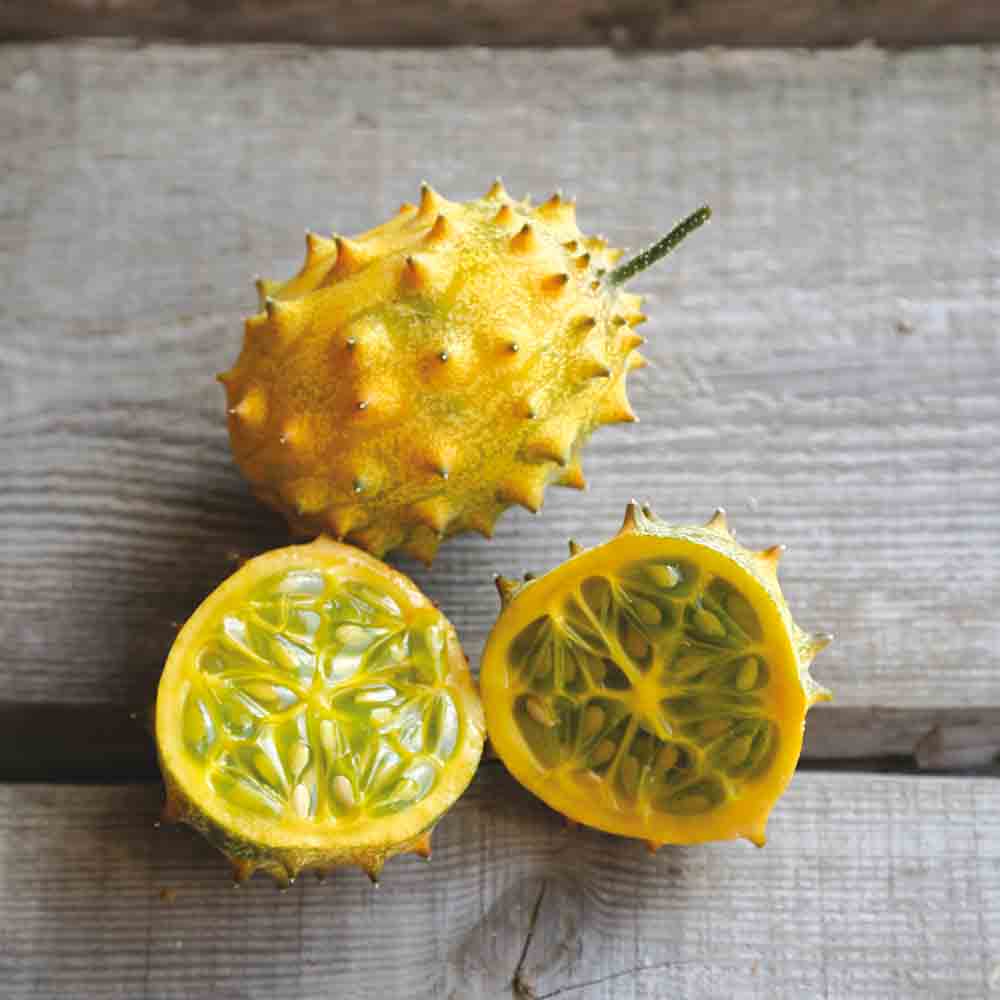AFRICAN HORNED CUCUMBER ´KIWANO´ AB
Cucumis metuliferus
The African Horned Cucumber , sometimes called Metulon or Kiwano , is a real curiosity! Its flesh is juicy, fine, sweet and without bitterness, with notes of kiwi or banana depending on the ripeness of the fruit.
Eat raw, plain, salty or sweet, in a fruit salad or with fish and lime juice . It is also used in certain cocktails .
Train against a wall or in a greenhouse. Ripens late August, early September.
How to successfully sow African horned cucumber (Kiwano)
Sow in March/April/May in warm pots at a minimum of 20°C , then transplant into healthy, fresh, loose, humus-rich soil when the plant has 3 leaves and frost is no longer a risk.
When planting in the garden, keep a spacing of 0.60 m , in rows spaced 1.30 m apart, in sunny and warm exposure. For growing against a wall, keep 50 cm between plants.
Growing the African Horned Cucumber (Kiwano)
Regular but not excessive watering at the feet and mulching .
Harvesting the African Horned Cucumber or Kiwano
Kiwano cucumbers are generally harvested in late August or September when the fruit has turned yellow/orange .
Fruits can be stored for several weeks or months at room temperature, in a ventilated room (especially not in the refrigerator).
Trick
Most cucumber varieties are called " runners ," meaning they produce long stems and can easily occupy 2-3 m² ! Not very practical for small vegetable gardens! But it is possible to get around the problem by encouraging your cucumber plants to grow taller, by climbing a fence for example. Help your plants position themselves on their support, and the tendrils of your cucumbers will do the rest. This practical and simple method gives the fruits better exposure to light, prevents them from being soiled, and makes harvesting them much easier... and it also works for gherkins !









